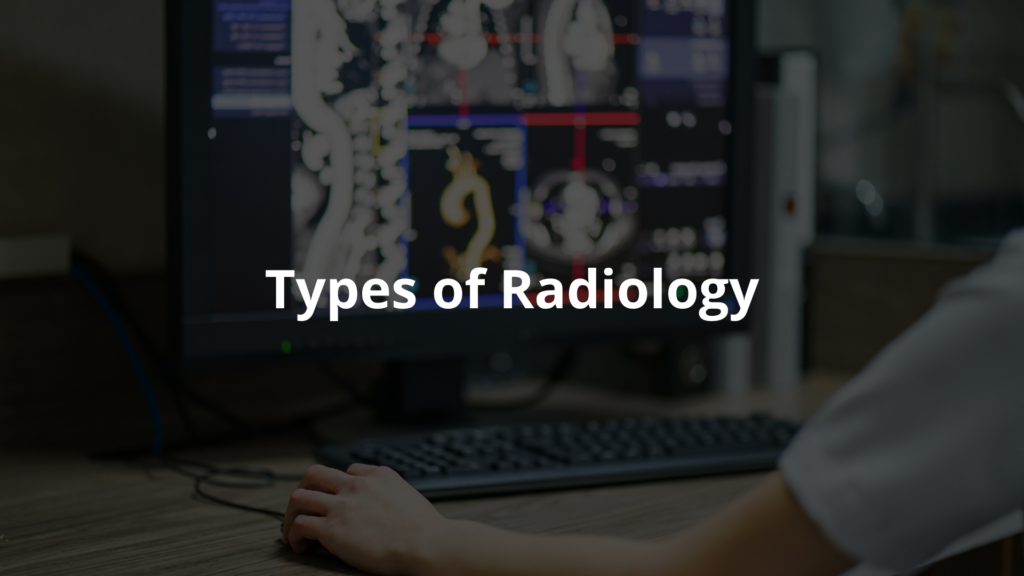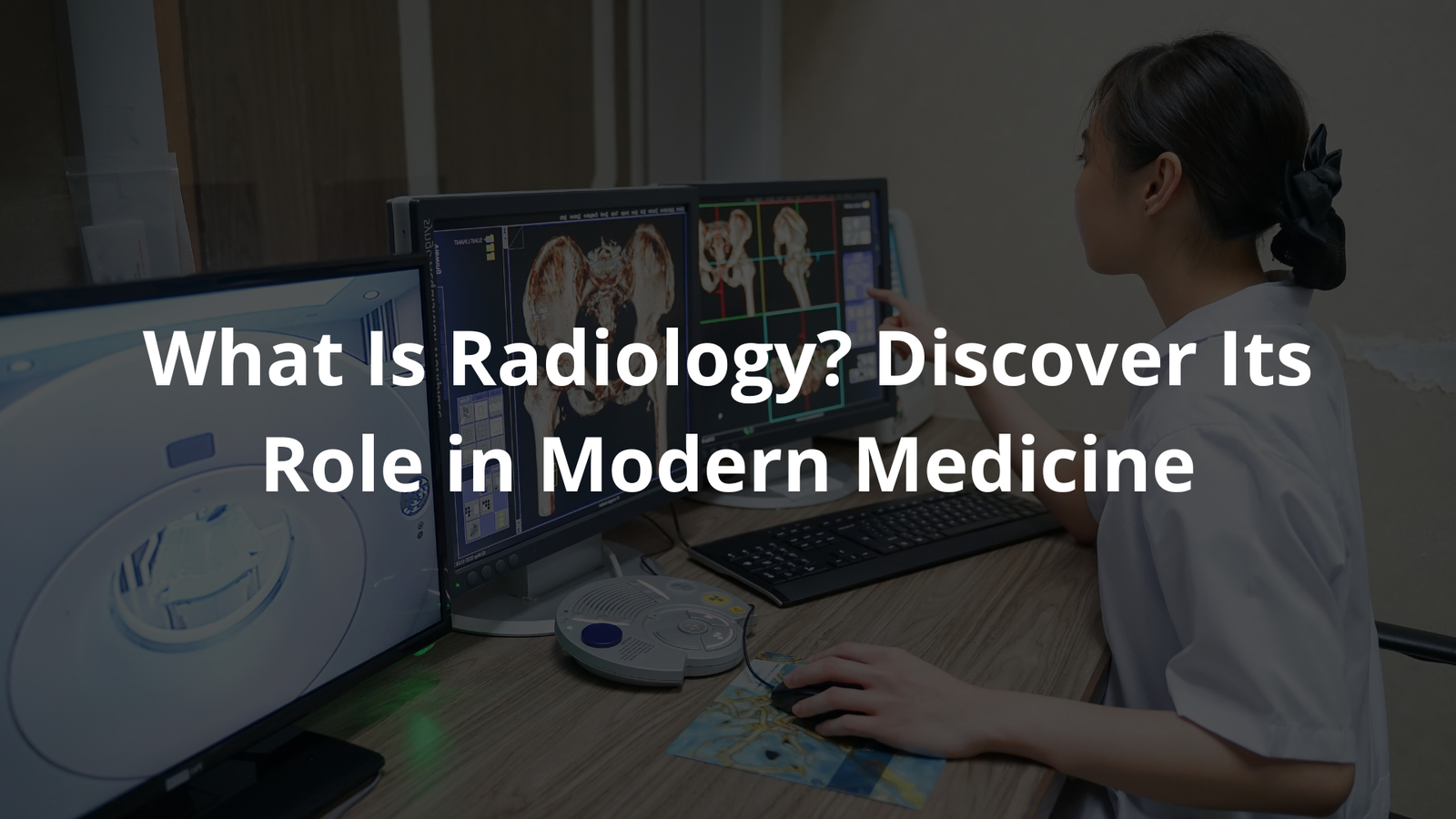Discover the meaning of radiology! Learn how imaging techniques like CT and MRI play a vital role in diagnosing and treating health conditions.
Radiology refers to a branch of medicine that uses imaging techniques like X-rays, CT scans, and MRIs. These methods allow doctors to look inside the body, helping them diagnose and treat diseases accurately. Amazing, right?
Around 80% of medical decisions depend on these imaging studies. That’s why grasping the meaning of radiology matters so much. It’s not just about pretty pictures; it’s about saving lives and enhancing patient care.
There’s a lot more to discover, including specific types of radiology and their roles in healthcare. So let’s keep exploring this fascinating field together!
Key Takeaway
- Radiology uses imaging techniques to see inside the body.
- It helps doctors diagnose diseases and plan treatments.
- Different types of radiology are used for different medical needs.
What is Radiology?
Radiology is the science of using imaging to look inside the body. It takes the invisible and makes it visible. Common types of imaging include X-rays, CT scans, MRIs, and ultrasounds. X-rays are fast and useful for spotting fractures or chest infections.
CT scans offer detailed images for trauma or tumour detection. MRIs are best for viewing soft tissues, like the brain or ligaments. Ultrasounds are used for various issues, including pregnancy and gallbladder problems.
Radiology is critical in modern medicine, as about 80% of medical decisions rely on imaging. Interventional radiology uses imaging to guide procedures, such as threading a catheter to treat aneurysms or cancer. This approach is less invasive, leading to faster recovery.
Nuclear medicine, like PET scans, uses small amounts of radioactive material to check organ function or detect cancer spread.
Digital imaging has replaced traditional film, making images clearer, faster, and easier to share. This technology is safe, with low radiation doses in most tests.
Types of Radiology

Radiology is a bit like eavesdropping on the body’s secrets without it even knowing. It’s this fascinating mix of science and technology that lets doctors see what’s going on under the skin without making a single cut.
I remember the first time I saw an X-ray of my own hand—every bone laid bare, like a map of me. It felt strange, almost intrusive, but also kind of magical. And that’s the thing about radiology—it’s practical, sure, but it’s also a little bit like magic.
There are a handful of main types, each with its own quirks and uses. Let’s break it down:
1. Diagnostic Radiology
This is the bread and butter of radiology. It’s the stuff you think of first—X-rays, CT scans, MRIs. These tools are like the Swiss Army knives of medicine. They’re versatile and used for everything from spotting a broken bone to finding a tumor.
For example, an X-ray can show a fracture in under a minute. No need for guesswork. And then there’s the MRI, which is like the overachiever of the group. It doesn’t just show bones; it can map out soft tissues, like muscles or even the brain. Wild, right?
I once had a CT scan after a bike accident (long story, but it involved a pothole and bad luck). The machine whirred around me, and within minutes, the doctor had a clear picture of my ribs. No fractures, just bruising. It was a relief, but also a reminder of how much these machines can do.
2. Interventional Radiology
This one’s a bit more hands-on. It’s not just about looking; it’s about doing. Interventional radiology uses imaging to guide procedures—like threading a catheter into a vein or placing a stent in an artery. These are minimally invasive, which is a fancy way of saying they don’t involve big cuts. Patients heal faster, and there’s less risk of infection.
Think of it like using a GPS to navigate tricky roads. The imaging acts as the guide, showing the doctor exactly where to go. My aunt had a procedure like this for a blocked artery. She was in and out of the hospital in a day, no major surgery needed. It’s kind of amazing when you think about it.
3. Nuclear Medicine
Now, this one’s a little different. Nuclear medicine uses tiny amounts of radioactive material to see how organs are working (2). It’s not just about structure (like an X-ray); it’s about function. A PET scan, for example, can show how active a tumor is, giving doctors a clearer idea of how to treat it.
The word “radioactive” might sound scary, but the doses are super small—like a drop in the ocean. And the benefits? Huge. It’s like turning on a light in a dark room. Suddenly, you can see what’s really going on.
4. Pediatric Radiology
Kids aren’t just small adults (though my cousin’s toddler would argue otherwise). Their bodies are still growing, and they need special care during imaging. Pediatric radiologists know how to make the process less scary—using colorful rooms, playful language, or even letting kids hold a stuffed animal during the scan.
When my little brother broke his arm, the radiologist showed him the X-ray and explained it like a superhero story. “Your bone is like Captain America’s shield—it’s super strong, but even shields can get a crack sometimes.” It worked like a charm. He stopped crying and started asking questions instead.
5. Breast Imaging
This is a specialized field focused on detecting breast diseases, especially cancer. Mammograms are the star here. They can catch issues early, often before symptoms even show up. Early detection can save lives, plain and simple.
My mom gets a mammogram every year. She says it’s uncomfortable but quick, and the peace of mind is worth it. It’s one of those things that feels routine until it isn’t—until it finds something that needs attention.
Radiology isn’t just about machines and images; it’s about stories. Each scan tells a tale—of injury, of illness, of healing. And while the technology is impressive, it’s the human touch that makes it work. The radiologist who interprets the images, the technician who calms a nervous patient, the doctor who uses the results to make a diagnosis—they’re all part of the process.
If you ever find yourself needing one of these tests, here’s my advice: ask questions. Don’t be afraid to understand what’s happening. These tools are there to help, to give answers when you need them most. And sometimes, knowing what’s inside can make all the difference.
Importance of Radiology
Source: Kenhub – Learn Human Anatomy
Radiology plays a vital role in diagnosing and treating patients. It goes beyond machines and images; it’s about real people. Imaging, like CT scans, helps doctors find problems that can’t be seen with the naked eye, such as small fractures or early signs of disease.
Early detection is key, as it can make the difference between treatable conditions and those that are too late to fix.
Radiology also guides treatments. For example, in cancer therapy, imaging helps pinpoint the exact location of a tumour, ensuring radiation targets only the cancerous cells, not healthy tissue. Doctors can also track the progress of treatment and adjust as needed.
In emergencies, radiology provides critical information quickly. In trauma cases, scans like X-rays or CTs help doctors identify internal injuries or fractures instantly, which can be the difference between life and death.
Pediatric radiology tailors its approach to children, making the process less scary and more comfortable for them.
Advancements in Radiology
Radiology has evolved into a dynamic and fast-moving field. Digital imaging has replaced traditional film, offering sharper and clearer images, like upgrading from an old TV to a 4K screen.
These images can be stored and shared instantly, making it easier for doctors to access a patient’s entire imaging history with just a few clicks.
3D imaging is another breakthrough. Instead of looking at flat images, doctors can view organs and tissues in three dimensions. This helps them plan surgeries with more precision, especially in complex areas like the brain or heart.
Artificial intelligence (AI) is also transforming radiology. AI scans images quickly, spotting tiny details that humans might miss, such as small fractures or lung shadows. It’s not perfect, but it speeds up the process and can help doctors prioritise critical cases.
Interventional radiology uses imaging to guide tiny tools inside the body, offering less invasive treatments with quicker recovery times.
FAQ
What is the role of radiologists in the treatment of disease?
Radiologists are medical doctors who specialize in using medical imaging techniques like magnetic resonance imaging (MRI), computed tomography (CT) scans, and plain radiography to diagnose and treat diseases.
Radiologists work closely with other medical doctors to interpret medical images and guide treatment plans, especially for conditions like cancer, heart disease, and neurological disorders.
How do radiologists complete their medical education and training?
In Australia, radiologists complete a medical degree, which typically takes 4-6 years, followed by an internship year. Afterward, they enter a 5-year radiology residency program through the Royal Australian and New Zealand College of Radiologists (RANZCR).
During this time, radiology trainees gain practical experience in diagnostic radiology. Some radiologists may choose to pursue further subspecialty training in areas such as interventional radiology, nuclear medicine, or paediatric radiology.
Upon completion of their training, radiologists are eligible to sit for the Fellowship exam with RANZCR, which certifies them as specialist radiologists in Australia.
What are the different medical imaging techniques used in radiology?
Radiologists utilize a variety of imaging techniques to visualize the human body, including x-rays, CT scans, MRI, ultrasound, and positron emission tomography (PET).
Each technique uses different forms of energy, such as ionizing radiation, magnetic fields, or sound waves, to produce detailed images that can help identify and diagnose medical conditions. Radiologists interpret these medical images to guide patient care and treatment.
How does radiology play a role in the diagnosis and treatment of breast cancer?
Radiologists use specialized imaging techniques like mammography, breast ultrasound, and breast MRI to detect and diagnose breast cancer.
They work closely with oncologists and surgeons to determine the stage and extent of breast tumors, which informs the most appropriate treatment plan for each patient. Radiologists also use image-guided procedures to perform biopsies and deliver targeted radiation therapy for breast cancer.
Conclusion
Radiology is a pretty important part of medicine. It helps doctors figure out what’s going on inside our bodies, you know? There’s a bunch of different ways to take images, like X-rays or MRIs, and some doctors even do procedures right then.
I think when patients get to learn about these things, it makes them feel a bit more at ease with their care. After all, understanding helps take away some of the mystery surrounding their health.
References
- https://www.merriam-webster.com/dictionary/radiology
- https://www.iaea.org/sites/default/files/nuclear-medicine-for-diagnosis-and-treatment.pdf
- https://smithchason.edu/blog/innovations-in-radiologic-technology-whats-on-the-horizon/




